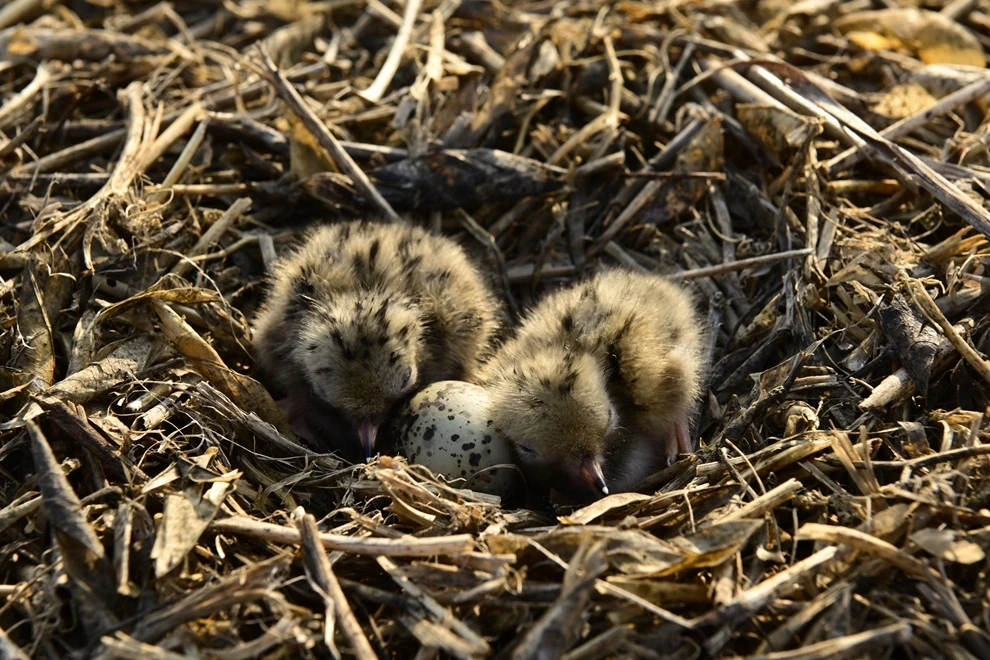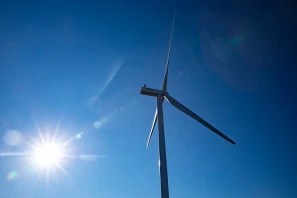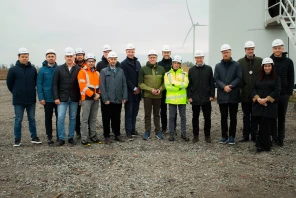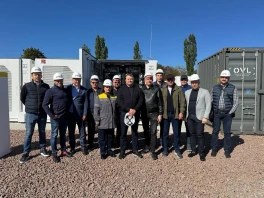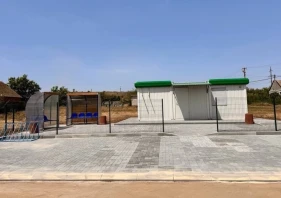For the fifth consecutive year, the environmental project “Bird Islands” continues to thrive in the Tyligul Estuary with the support of DTEK Tyligulska Wind Power Plant. The project shows promising results for the local wildlife: while in 2024 there were 385 breeding bird pairs recorded, this year, at the very beginning of the nesting season, over 500 pairs have already been counted.
The artificial islands were created in 2021 to help preserve the bird biodiversity of the Tyligul Estuary and protect hatchlings from predators. In partnership with the Tyligul Regional Landscape Park, DTEK Tyligulska WPP supported the construction of 1,500 m² of nesting platforms for birds.
The “Bird Islands” are covered with straw and dry grass to create optimal nesting conditions. Due to their location in the middle of the estuary and their stilt-based construction, the platforms are inaccessible to predators and remain free of overgrowing vegetation, allowing birds to nest without disturbance. The team at Tyligulska WPP, together with ornithologists, monitors the islands and regularly renews the surface covering.
“We believe the energy of the future should be not only green, but also respectful of all living beings. Every year we look forward to the start of the nesting season at ‘Bird Islands.’ This year we’re seeing more birds, more nests, and more chicks. It proves the project is truly benefiting local wildlife. The growing number of breeding pairs is more than just a figure—it’s the result of years of dedicated, systematic work,” said Oleh Solovey, Director of DTEK Tyligulska WPP.
Each year, the “Bird Islands” become home to species such as the common tern (Sterna hirundo), sandwich tern (Thalasseus sandvicensis), pied avocet (Recurvirostra avosetta), and Kentish plover (Charadrius alexandrinus). The latter two are listed in the Red Book of Ukraine.
“The nesting season is currently at its peak. Some species have already laid a second clutch. This year’s season is particularly active: not only have the birds returned, but their numbers have increased. We’ve already counted over 500 pairs. Many species are now hatching chicks, and some are simultaneously incubating new eggs and caring for earlier hatchlings. This dynamic is a good sign—it means the birds are successfully adapting to the platforms. We’ll be able to draw final conclusions after the season ends in August,” said Ihor Gerzhyk, Head of the Research Department at the Tyligul Regional Landscape Park.
Despite the war and the danger looming over Ukraine’s southern regions, the birds are coming back. And that’s a sign that even in the darkest times, life finds a way.



